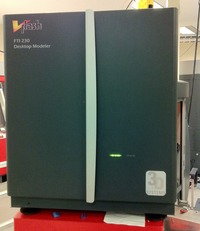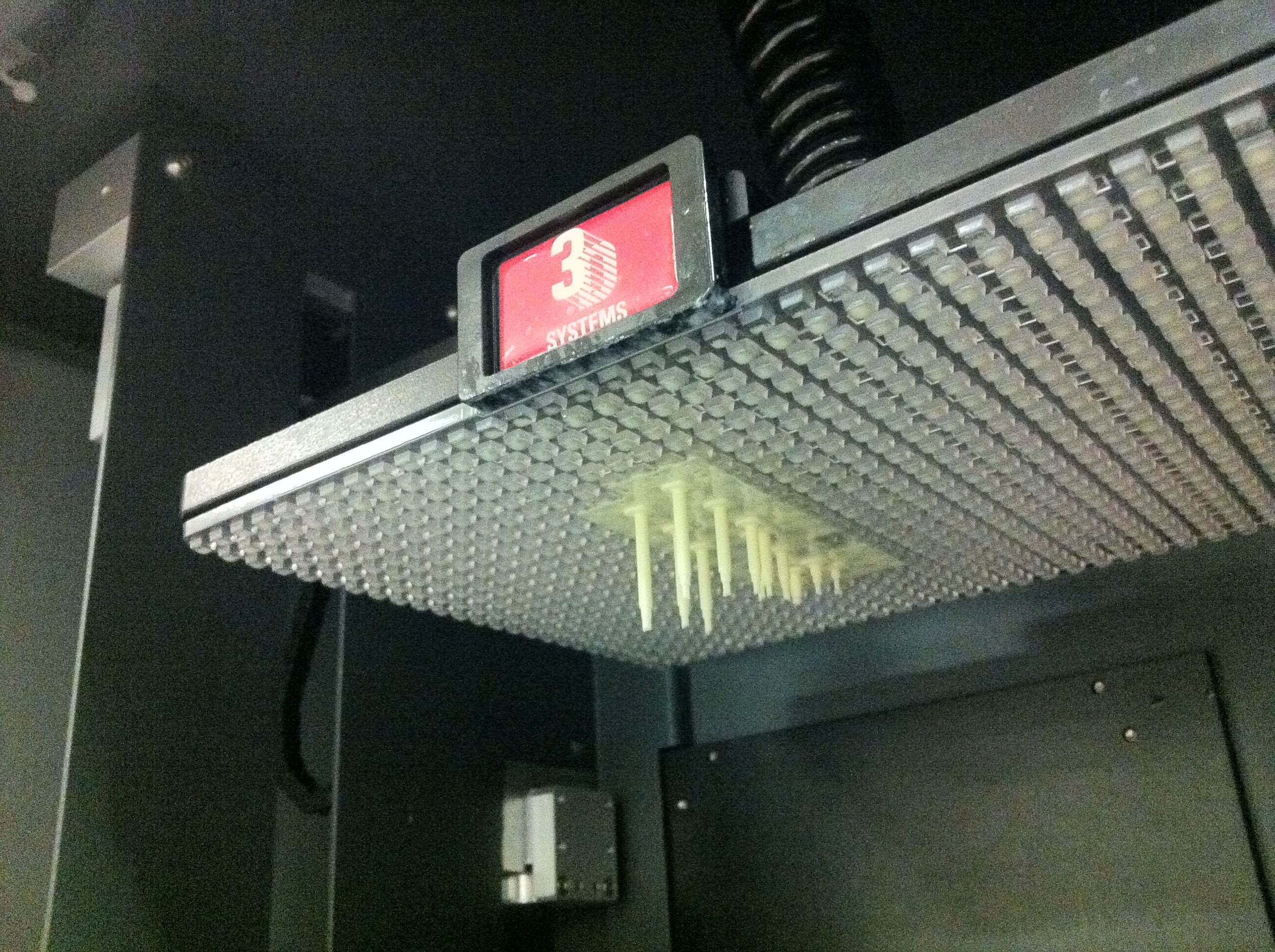 During our recent visit to 3D Systems we managed to get a look deep inside one of their intermediate-level 3D printers: the V-Flash. This device uses a unique method of deploying build material that results in the object being built upside down! Upside down or not, the printed results are of extremely high accuracy.
During our recent visit to 3D Systems we managed to get a look deep inside one of their intermediate-level 3D printers: the V-Flash. This device uses a unique method of deploying build material that results in the object being built upside down! Upside down or not, the printed results are of extremely high accuracy.The V-Flash uses a liquid resin approach, in which a layer of resin is instantly solidified with a high-intensity flash of light (hence the product name). The unique feature is how the resin is applied. Imagine the following:
- The resin sits in a cartridge at the bottom of the machine
- A thin transparent plastic film is inserted into the resin reservoir
- The plastic film is pulled out (wet) of the reservoir into the build area
- A light flashes the appropriate pattern onto the resin on the film, solidifying an entire layer all at once
- This resin fuses to the roof of the build chamber
- The plastic film is retracted back into the reservoir to “get wet” with resin
- The build platform is raised a small amount, and the object is slowly built, upside down
The advantages of this approach are several:
- Extreme accuracy is possible, because the resolution of the layer is equal to the light projection
- Clean operation without waste occurs because the resin is applied directly from the reservoir and returned if not “flashed”
- Quick prints because an entire layer is built in one flash
 There’s one more advantage: the price of this unit is actually under USD$10,000. That’s far more than you’d pay for a hobby printer, but far less than you’d pay for a big-time commercial 3D printer. 3D Systems terms this a “personal” 3D printer, although it’s most likely found in professional offices at this time.
There’s one more advantage: the price of this unit is actually under USD$10,000. That’s far more than you’d pay for a hobby printer, but far less than you’d pay for a big-time commercial 3D printer. 3D Systems terms this a “personal” 3D printer, although it’s most likely found in professional offices at this time. Via 3D Systems

